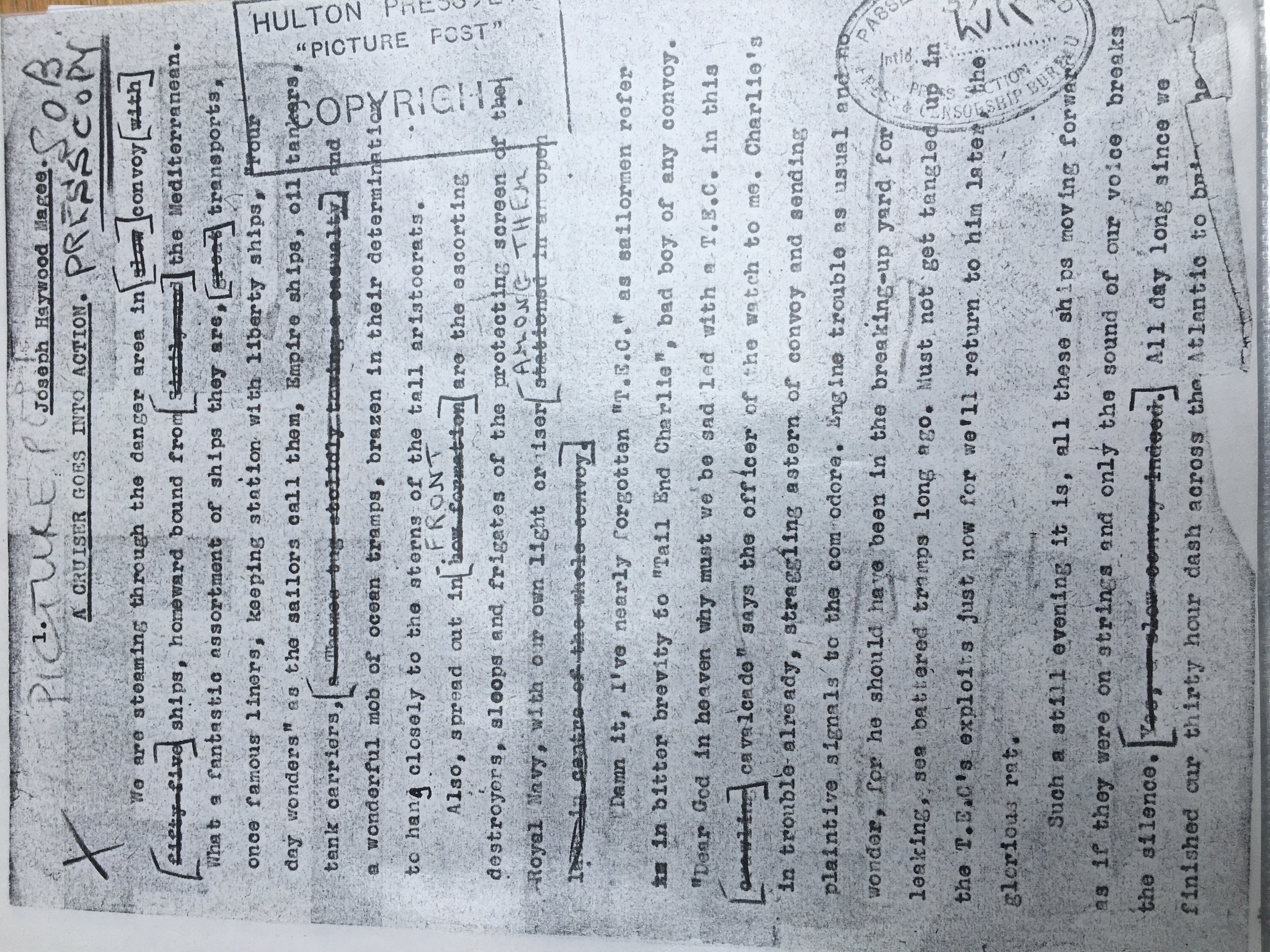
A wartime message from Magee to his family
A PICTURE POST PHOTOGRAPHER: HAYWOOD MAGEE
3. The War Years
It’s not clear when “Mac” started contributing to Picture Post, but Lorant’s successor, Tom Hopkinson, a keen admirer of Magee’s work, recruited him to the Picture Post full-time staff, on £15 a week, in 1941.
From then on, he worked relentlessly for Picture Post.
For most of the War years, he lived alone: he sent his wife and two children to Cornwall for safety, and then to live with grandparents in Yorkshire. His house in Banstead was bombed, but no one was in.
His picture stories of the War are strikingly humane: he always concentrates on the ordinary individuals caught up in the mayhem, whether victims of bombing, sailors anxiously scanning the skies for enemy aircraft, or exhausted soldiers.
There is no sense of celebration or glory in war – only the blood, sweat and tears.
Into Action: Aboard a Cruiser (1943) is his story alone: the clearest sense we get of Haywood Magee at work.
“We gave our cameraman J.H. Magee, an assignment aboard a cruiser,” says the introduction, “For weeks, we didn’t know where he was, what had happened to him. These are the pictures that he brought back. And this is his own story.”
He is pictured, “Our Cameraman at his Action Station,” a long lens camera around his neck, looking out to sea, with a half smile on his face.

Magee's draft article for Picture Post: Aboard a Cruiser

This is one of Picture Post’s most personal picture stories: Magee is a vivid writer, not afraid of plain language, recording experience in the first person present. Both in photography and words, he creates a strong, direct sense of life on board.
He takes the reader through the tension and uncertainty of life on board, as bombs fall around the convoy and German planes strafe the sky:
“I cower and tremble as this monstrous chorus of gunfire beats me downward with its intensity of noise, noise that bears no relation to sanity. I am so benumbed in mind that instinct alone keeps my hands holding my camera at the alert and my trigger-finger in position.”
The readers are there with him, a lone cameraman facing the horror of war as he tries to do his job.
His pictures show the bombs exploding among the convoy, against grey skies and seas, but most are more intimate shots of men at work: look-outs, signallers, artillery officers, torpedo officers, gunners, stokers - their faces concentrated on the urgent collective tasks they have to do, their hands gripping machinery and equipment and weapon systems.
We see the captain dictating his report to the Admiralty, the padre broadcasting his evening prayers, the paymaster receiving a catering report.
This is Magee at the centre of the action, and as a picture story (perhaps unique in having a single writer and photographer), it is a masterpiece.


